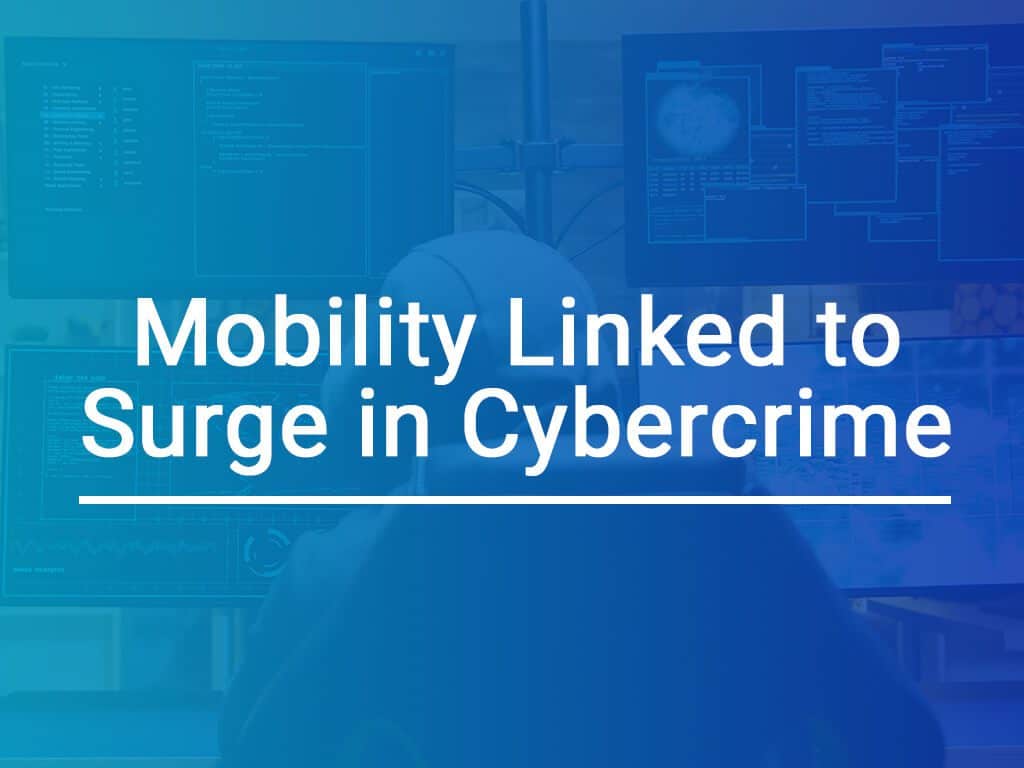
Mobility Linked to Surge in Cybercrime
An endpoint ecosystem study by Mobile Mentor found a direct correlation between the rise in mobility and a recent surge in cybercrime. With the pandemic forcing people to work remotely and to rely on devices beyond the traditional desktop, the study found that cybercrime has jumped overall by 500% since the start of the COVID-19 era. Smartphones, laptops, and tablets became the tools of choice of the work-from-home (WFH) brigade. And this led to a much greater security risk, particularly in highly regulated industries.
The report highlighted a big area of difficulty for IT: the trade-off between endpoint security and the employee experience (EX). At one extreme, things can be made so secure that almost no one can access systems or communicate to anyone else. At the other end of the scale, everything is so easy to access that criminals waltz in unannounced and undetected, steal valuable data, take over user identities, gain administrative privileges, and drain corporate bank accounts.
Researchers make the point that the explosion in mobility and WFH overstretched the capabilities of many IT departments. Security, in particular, fell badly behind in an increasingly distributed and autonomous workforce world. Not only are companies getting hacked in far greater numbers, but employee frustration has risen sharply. They are resigning in greater numbers than we have seen for decades. A talent crunch is emerging right at a time when more staff are badly needed across all functions. IT and security teams are threadbare in many cases. And good IT team members can’t be counted upon to stay loyal as headhunters are always looking to lure them elsewhere with higher pay.
Study Findings
The study discovered that relatively few employees are aware of security risks and corporate policies addressing these risks. 27% of employees only view security policies once per year or less. Similarly, 39% receive security awareness training less than once per year. Out of sight, out of mind appears to be the case. Instead of constant reminders, they get a quick dose of security training or policy awareness which is soon forgotten.
In any case, 41% believe security policies restrict the way they work. They just don’t accept that they shouldn’t use a USB drive or that they should be deprived of convenient online services. For example, 53% consider that they are more efficient using Dropbox and Gmail than their approved corporate tools.
Passwords came up as another major bone of contention. 31% of people use a password management tool. The other 69% select passwords that are easy to remember. There is a link here to EX. Most users have countless passwords, pins, logins and security safeguards they are supposed to remember. For work, most have dozens of passwords when you factor in HR, production tools, financial systems, payroll, benefits, corporate intranet, VPN, and email. And then there are personal accounts which often have to be accessed during work hours such as preferred hotel sites, airlines, personal banking, personal email, and more.
The policy may require 10-character passwords and that Xd! must be included – and must be changed every month. But when so many passwords and characters are in play and password managers aren’t trusted due to being a single point of failure, sloppiness is inevitable.
Bring Your Own Device (BYOD) reared its head as another area of big risk. The study found the use of BYOD has surged over the past two years. These days, 64% of people use personal devices for work. Unfortunately, less than a third of organizations have instituted a program to enhance BYOD security. On top of that, shadow IT has become an even bigger issue. IT has lost control of the use of the approval process for apps. As they often don’t control the devices, they don’t know what’s been put on them. Even when they do have some control, the accessibility of cloud and SaaS resources can make it hard to know if some department head or staffer has subscribed to online services. Some may be very secure. But many aren’t.
Bottom line: 72% of employees values their personal privacy over company security. In such a climate, security must rise to the challenge. It must be comprehensive, but it must also not inhibit the user from performing their duties. By automating security and delivering it over the cloud, Syxsense Enterprise provides real-time vulnerability monitoring and instant remediation for every single endpoint in an environment. This represents the future of threat prevention. Breaches can now be detected and remediated within one endpoint solution, Syxsense.







